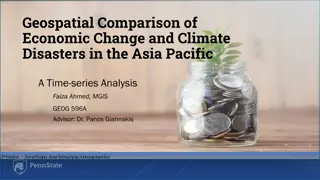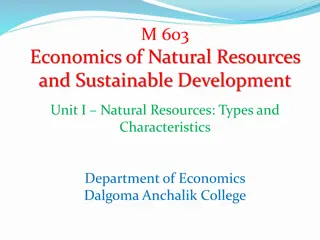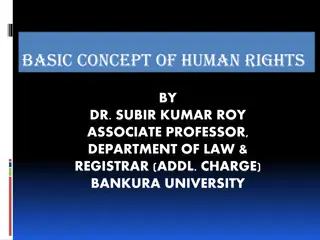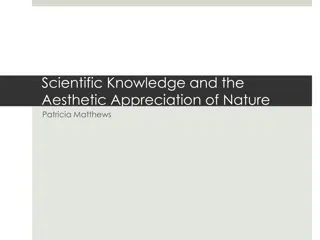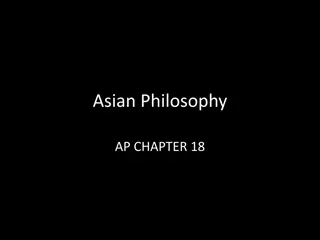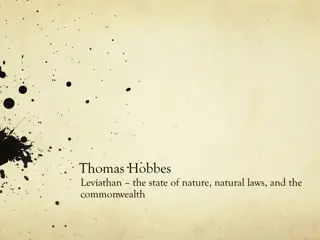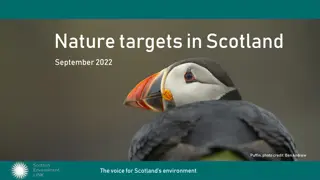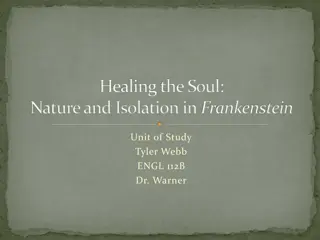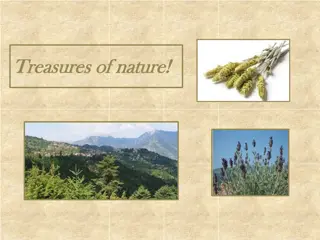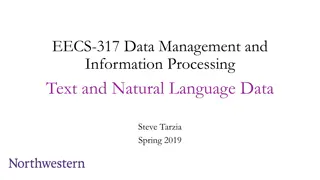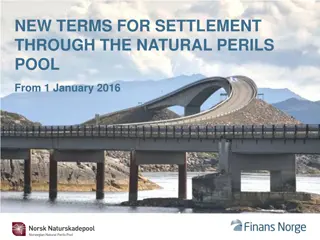Natural Processes - Understanding Changes in Nature
Natural processes encompass a range of phenomena that shape our environment, from corrosion to photosynthesis. The evolving scope notes proposed by Martin Doerr and Lida Charami shed light on how we perceive and categorize these processes, exploring both their natural origins and human interactions. By delving into facets like natural disasters, body processes, and material interactions, we gain a deeper understanding of the intricate mechanisms governing our world.
Download Presentation

Please find below an Image/Link to download the presentation.
The content on the website is provided AS IS for your information and personal use only. It may not be sold, licensed, or shared on other websites without obtaining consent from the author.If you encounter any issues during the download, it is possible that the publisher has removed the file from their server.
You are allowed to download the files provided on this website for personal or commercial use, subject to the condition that they are used lawfully. All files are the property of their respective owners.
The content on the website is provided AS IS for your information and personal use only. It may not be sold, licensed, or shared on other websites without obtaining consent from the author.
E N D
Presentation Transcript
Natural Processes new scope note, proposal by Martin Doerr. alter structure, proposal by Lida Charami.
Natural Processes Facet: Natural Processes Hierarchies: Natural Disasters Genesis Facet, current scope note: This facet comprises types of changes in states of affairs, things and entities that result from natural phenomena (e.g. earthquakes, floods).
Natural processes That a particular phenomenon unfolded without involving any human intervention (i.e. 100% naturally) is a very strong claim to make in fact one that in most cases would be untrue. Even if causation cannot be established, a loose correlation between any two phenomena of interest can be observed in many cases. The new scope note treats Natural Processes not as phenomena that occurred without any human intervention, but as phenomena for which we cannot establish causation on behalf of humans (i.e. volitional agents). The discussion is pending, but it seems well-received thus far.
Natural Processes Facet, proposed scope note: This facet comprises types of changes in states of affairs, things and entities and their mechanisms that are dominated by physical, biological or environmental material interactions, regardless whether they result from natural phenomena (e.g. earthquakes or plant growth) or phenomena in which material human intervention played a role (such as irrigation induced soil salinization or landslides due to deforestation). It comprises in particular body processes, such as birth, and diseases. It does not comprises types of direct human intervention in physical environments, such as "deforestation", "overfishing" or "irrigation".
Examples of Natural Processes Corrosion is a chemical process that converts a refined metal into a more chemically-stable form such as oxide, hydroxide, or sulfide. It is the gradual destruction of materials (usually metals) by chemical and/or electrochemical reaction with their environment Decomposition is the process by which organic substances are broken down into simpler organic matter. The process is a part of the nutrient cycle and is essential for recycling the finite matter that occupies physical space in the biosphere. Breathing (1) the process of moving air into and out of the lungs to facilitate gas exchange with the internal environment, mostly by bringing in oxygen and flushing out carbon dioxide. (2) The process of respiration, during which air is inhaled into the lungs through the mouth or nose due to muscle contraction and then exhaled due to muscle relaxation. Photosynthesis is a process used by plants and other organisms to convert light energy into chemical energy that can later be released to fuel the organisms' activities.
Examples of Natural Processes Sedimentation: is the process of allowing particles in suspension in water to settle out of the suspension under the effect of gravity. Natural selection: the process that results in the adaptation of an organism to its environment by means of selectively reproducing changes in its genotype, or genetic constitution. Childbirth: the process of bringing forth a child from the uterus, or womb. Fossilization: the process of replacing organic materials in organisms by minerals Erosion: the process of removing surface material from Earth s crust, primarily soil and rock debris, and the transportation of the eroded materials by natural agencies (such as water or wind) from the point of removal.
Biological processes New hierarchy: Biological processes Proposed scope note: Genetically programed types of processes specifically pertinent to the functioning of integrated living units (cells, tissues, organs), that occur within the confines of the bodies of living organisms. They are often described by their outcome e.g., the biological process of cell division results in the creation of two daughter cells from a single parent cell. Examples of biological processes are cell growth and maintenance, cell death, signal transduction, metabolism, childbirth, aging etc.
Physical chemical Processes New hierarchy: Physical - chemical processes Proposed scope note: Types of processes that are explained by some dominating laws of physics and chemistry changing the substance of materials and surfaces, often gradually. Characteristic of such processes is that they occur outside of the confines of the bodies of living organisms, in natural or artificial environments. These types of processes may occur over relatively short time-spans, such as, for example, oxidation, or can be very slow, such as petrification or the creation of geological features under plate tectonics. Question: Do we need to separate out large-scale complex environmental interactions, such as plate tectonics? Do we need a separate hierarchy for natural events?
Natural disasters Natural disasters current scope note: This term classifies changes in states, things and entities that can be attributed to activity of natural phenomena and whose effect is such as to cause the dissolution or modification of the subject of these changes to the degree that their identity is destroyed.
Natural disasters Some remarks Earthquakes, volcanic eruptions, tsunamis, landslides, droughts, hurricanes, meteorite impacts, fires are regarded as natural disasters when they have a extensive negative socioeconomic impact such as fatalities and/or overwhelming property damage, lead to loss of habitats, extinctions etc. A physical event, such as a volcanic eruption, that does not affect living beings or the environment is a natural phenomenon but not a natural disaster. A natural phenomenon that occurs in a populated area has the potential to become a natural disaster.
Natural Disasters Natural disasters proposed scope note (MD): This term classifies massive, abrupt and locally spread-out changes in the physical environment that are attributed to activity of natural phenomena, regardless whether there exist contributing factors of human activity, and whose effect is such as to cause wide-spread destructions and/or complex modifications in the area affected. Examples are earthquakes, volcanic eruptions, floods, droughts, meteorite impacts etc. They have the potential to disrupt day to day patterns of life, cause fatalities and/or overwhelming property damage, can lead to loss of habitats, extinctions etc. The terms in this hierarchy do not depend on whether the classified effect was indeed disastrous in a human sense. => Alternative Label: Potentially Disastrous Natural Phenomena


